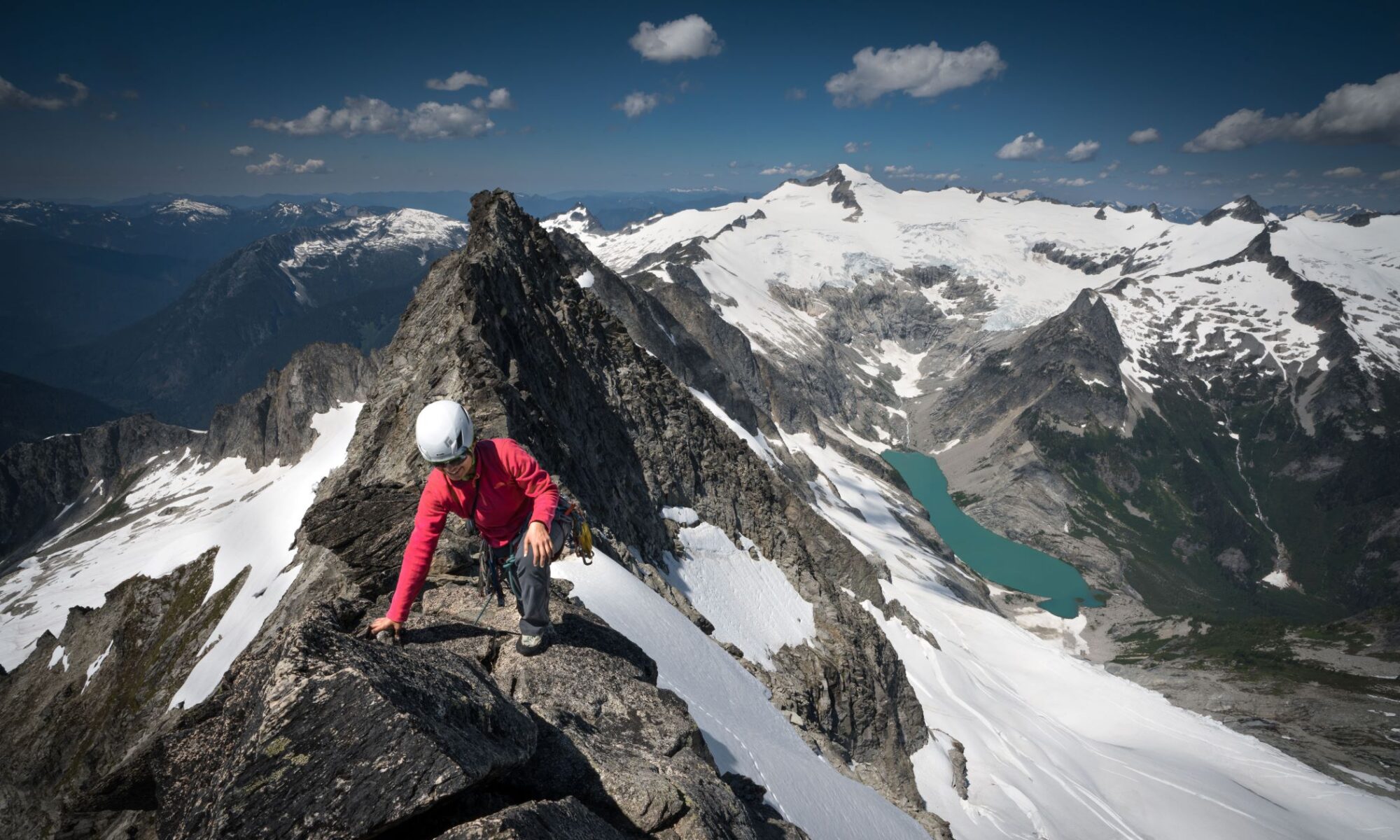by Kerry Loehr
This is my story, my evolution. One man’s journey from flailing on rock to being the proud new owner of a shiny trad rack. So if you don’t feel like you can rock climb, stick with it. You may surprise yourself.
Growing up in Southeast Portland I didn’t fully appreciate the tremendous opportunities afforded to me. Sure, I grew up skiing on Mt. Hood, but it wasn’t until I moved back from living in Ohio for four years that I truly appreciated the Pacific Northwest—the ocean, the high desert, and especially the mountains. I was 30 years old and I had yet to climb any of the glaciated peaks I grew up gazing at from afar.
I resolved to start “small” with Mount St. Helens. Note to any new climbers, do not do St. Helens in the fall unless you really really like scree. Next up was Mt. Hood. That was an eye opener!
Having a few summits under my belt, I started hearing about this group called the Mazamas. Hood also made me realize I needed to make sure my skills were solid if I wanted to keep climbing, which I most undoubtedly did. I was lucky enough to meet a group of Mazama mentors who took me under their wing. I joined the Mazamas and kept climbing with my new friends. Bigger mountains and harder routes were my goal, but still my focus was solely on glaciated peaks. Summits of Mt. Adams and Mt. Shasta followed, along with the Basic Climbing Education Program (BCEP).
BCEP was great, I learned valuable skills, met new friends, and was introduced to rock climbing. I have to admit, though, the rock sessions (especially Horesthief) were not my favorites. I was terrible at rock climbing, pure and simple. I was comfortable on snow, but rock baffled me. Still, I endeavored to climb at the Portland Rock Gym occasionally. Results were poor, and frustrating. It wasn’t until my climbing mentors brought me along on a climb of Unicorn Peak in the Tatoosh Range near Mt. Rainier that it started to make sense.
For those unfamiliar, Unicorn is a “mixed” alpine climb that involves steep snow slopes on the approach and a low 5th class single rock climbing pitch at the top. It was challenging, but my whole climbing world opened up then and there. I now understood why people rock climbed! Mixed climbs were now my jam.
Fast forward, I climbed a few single pitches at Smith Rock (still flailing), and then was fortunate enough to get invited to a climb of Liberty Bell in the North Cascades. Wow. Just wow! Still, to this day, one of my all time favorite climbs. 3.5 pitches of alpine rock climbing. I seconded a very skilled Eugene Lewins up that route, and it forever changed me as a climber. The beauty, the challenge, the problem solving all came together. I wanted to be a rock climber. Who would have guessed that?!
A series of resolutions followed: more gym climbing, to become a lead climber, and to take the Mazama Advanced Rock (AR) Program. I’m pleased to say I’ve achieved all of those goals now. I just graduated AR this year and I am stoked! In fact, I’m writing this from Ashland, OR having just climbed the Cosmic Wall on Mt. Hubris in northern California. That’s four successful climbs in four weeks, leading Unicorn Peak, climbing Mt. Hood, swapping leads on Ingalls Peak, as well as the Cosmic Wall. Not a bad summer so far!
I’m comfortable leading trad climbs, and now truly have freedom to do a lot of what I think are cool things in the moutains. Along the way I have had many mentors, developed skills, and have climbed with new and old friends.










